#site specific art
Text
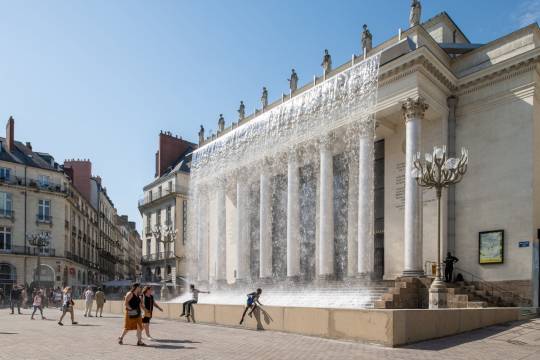
Stéphane Thidet Challenges Physics and Social Norms in His Site-Specific Installations
69 notes
·
View notes
Text
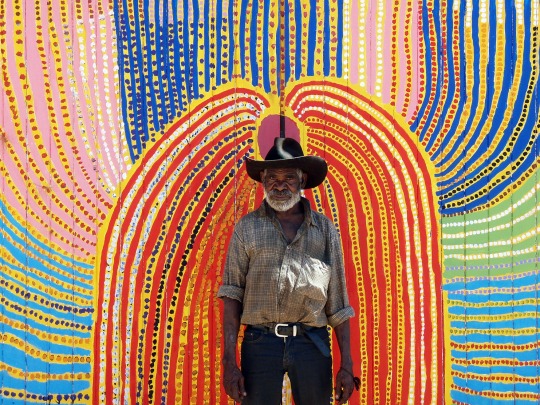
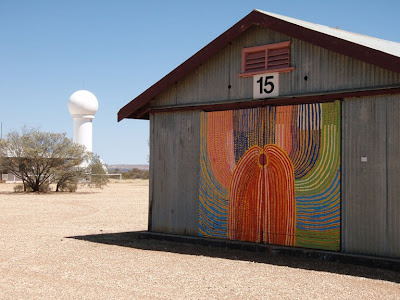
Tommy Mitchell (Australian, 1943 - 2013)
Walu Mural - 2008
Giles Weather Station shed doors, Western Australia
Photos: © Pamela Faye McGrath
more here
#abstract art#site specific art#australian indigenous art#australian aboriginal art#tommy mitchell#aboriginal art
293 notes
·
View notes
Text

let's meet at the confluence (2024)
A little sneak peak of my work for The New Gallery and Billboard 208 that will be up from January 27th - June 28th, 2024. Images of it installed to come! <3
let’s meet at the confluence is a suggestion to all Calgarians to consider the site where the Elbow flows into the Bow river and question how settler-colonial history is privileged in public and site specific art. The piece references the different histories of gathering at the confluence of the waters, histories that long predate Calgary, Alberta. Despite histories of Indigenous uses of the land, queer cruising, sex work, trade, the arrival of the railway, and the North West Mounted Police, the site of the confluence is often overlooked and rarely used as the great meeting place that it once was.
The simple map and text invites an audience of all backgrounds, Indigenous and non-Indigenous alike, to make their way from the The New Gallery along the Bow river to the confluence viewpoint and to consider their proximity to one another. The text is in English and the word confluence is repeated in multiple languages including Blackfoot, Cantonese, and Cree to honour the artist’s Michif roots and the specific location of the billboard on Treaty 7 and in China Town, pointing to the history of many different people living along the rivers.
#my work#public art#alberta#calgary#art#billboard#text#text art#maps#cantonese#cree#métis#blackfoot#indigenous#contemporary art#indigenous art#confluence#bow river#site specific art#illustration#archival material#canadian art
8 notes
·
View notes
Text
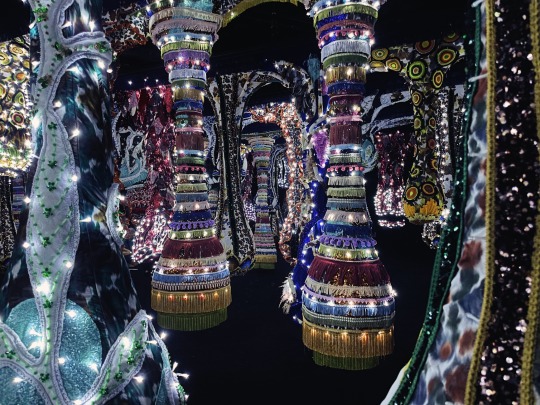
Stepped into an Enchanted Forest today. ✨ Site-specific textile art installations by Joana Vasconcelos at ArtisTree in Taikoo Place, Hong Kong. // (c) Jenny Lam 2024
#textile art#textiles#fabric#lights#site specific art#hong kong#immersive art#art#contemporary art#public art#installation art#art installation#installation#art basel#travel photography#travel#photo#photography#mobile photography#shot on iphone
3 notes
·
View notes
Text

Chris Drury. Cloud Pool Chamber. 2008.
felled diseased logs, granite
5 notes
·
View notes
Text
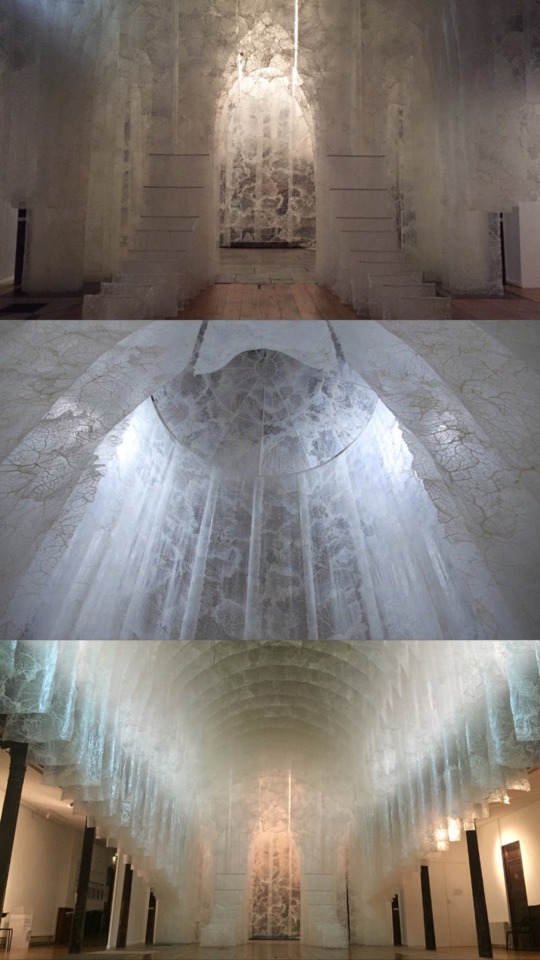
Elpida Hadzi-Vasileva, Fragility (2015)
"Taking over the length, breadth and height of the church the installation, Fragility, utilises Hadzi-Vasileva’s appropriation of unusual materials, in this case pigs caul fat. Exploring the expérience de mort imminente or near death experience, Elpida has focused upon the light seen and discussed by those effected, employing the architecture of Fabrica to route light through animal membrane - juxtaposing experience and materiality."
#Elpida Hadzi-Vasileva#art#artist#contemporary art#artists i love#church#site specific art#aesthetic#architecture#fragility
6 notes
·
View notes
Photo

John Giorno, BIG EGO, 2017-2022, Site specific wall painting
17 notes
·
View notes
Text
Less is More| Keep subtracting until it falls apart.
Text by Makoto. Li
The philosophy of minimalism may seem simple, but since Bauhaus, it has been the challenge of countless designers and artists to find the balance before it collapses. The Minimal Art movement, which emerged in the US in the 1960s, abandoned even the notion of ornamentation and curves in the first 50 years of the 20th century, while the 1990s saw a wave of minimalist fashion, with basic black and white pieces, taking the hassle out of matching. Let's take a look below.

Composition II in Red, Blue, and Yellow,1929.
From Picasso and Georges Braque, who turned the depth of field into a flat surface, to Piet Cornelies Mondrian and the Dutch stylistic movement (De Stijl, also known as Neoplasticism), who reduced design to three primary colours, black, white and grey and vertical horizontality, to Suprematism, who used basic geometric shapes to convey the artist's idea of light, simplicity has been the beauty of the art.

Christie's Richard Hamilton (1922-2011) | Putting on de Stijl.
But no matter how simplified the forms are, artworks of the past and present have more or less 'ideas to be conveyed' or 'hidden metaphors'. What makes the minimalist art of the 1960s different is the blunt statement of the artist - "we have nothing to say"- and not only the surface decoration but also the artist's emotions and even the traces of his creation are entirely stripped away.
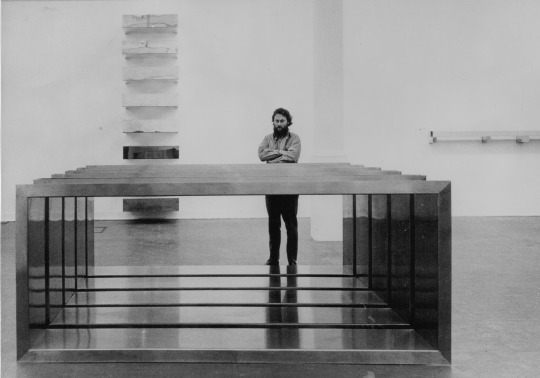
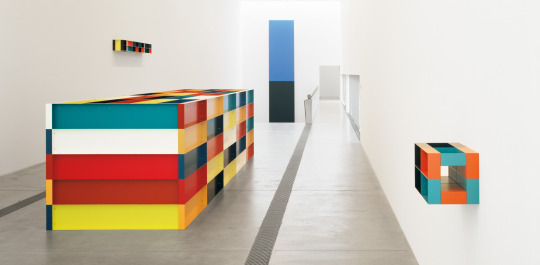
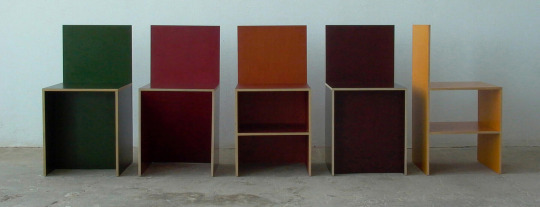
"There isn't anything to look at", said Donald Judd, the icon of minimalism - a statement that says that minimalism does not rely on illusory concepts but only appreciates the aesthetics of material purity.


Culture Trip History of a Painting: 'The Black Square' by Malevich.
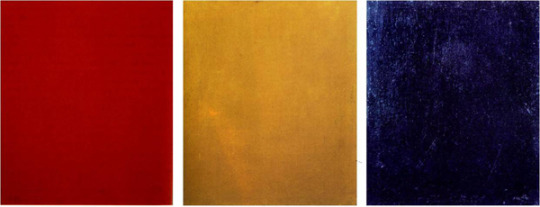
'Pure Red Colour, Pure Yellow Colour, Pure Blue Colour' (1921) by Alexander Rodchenko.
Based on Marxist materialism, Constructivist artists such as Vladimir Tatlin and Alexander Rodchenko were engineers of design structures, abandoning all nebulous concepts of art to make art a servant of society. They wanted to make art a public servant of humanity. However, the Cold War between the US and the Soviet Union brought artistic exchanges between the two countries to a standstill, so New York's 1960s Minimalism reflected advanced material civilisation and manufacturing technology.

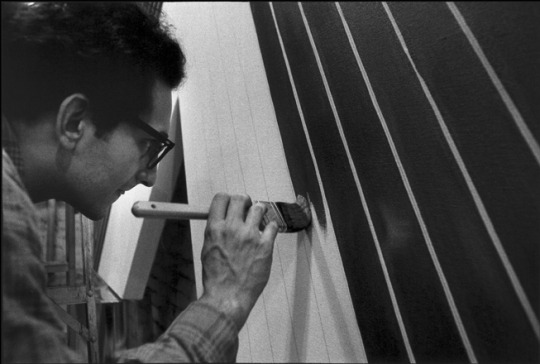
Frank Stella. The Marriage of Reason and Squalor, II. 1959.
In 1959, painter Frank Stella pioneered the concept of 'painters as workers and engineers' in the United States; using a paintbrush and glazes, the artist regularly lined the canvas with black and white lines. He decided to abandon the national imagery and work with simple lines.

MoMA Frank Stella. Arbeit Macht Frei from Black Series I. 1967.

MoMA Frank Stella. Die Fahne Hoch!
Although the paintings still seem slightly inadequate in the light of later minimalist art - the irregular shaking of the artist's fingers still reveals signs of artificiality, and the titles, such as the fascist slogan 'Die Fahne Hoch' or 'Arbeit Macht Frei', are inevitably too rich in connotation - the hard, cold visual style is a far cry from the previous Abstract Expressionism, led by the artist Jackson Pollock, who had been spilling paint with abandon. However, the rugged, cold visual style was a far cry from the abstract expressionism of Jackson Pollock, a painter. He had previously been known to spill paint with abandon and attracted the attention of the press and the art world. Later, Frank Stella turned to aluminium and copper bars as a medium to give the images a more industrial feel. In the 1970s, he introduced a series of 'Shaped Canvas', which twisted the canvas out of the two-dimensional world and reminded the viewer that 'a blank canvas is also a tangible entity'.

Donald Judd. Untitled. 1973.

Donald Judd. Untitled. 1986.
Donald Judd, a leading minimalist, first brought minimalist art into the three-dimensional realm in the early 1960s. Having started out as an expressionist painter, Donald Judd soon grew tired of the 'false' illusion of three dimensions on a flat surface; after a brief experiment with relief, he turned to industrial materials - aluminium, steel, polymer sheets and Plexiglas - to create basic geometric shapes, arranged at regular intervals to emphasise a logical, rational quality. In the mid-1960s, Donald Judd began to commission professional factories to execute his works, leaving himself to plan and design, erasing any trace of the artist's creativity.
Although the works are primarily three-dimensional, Donald Judd does not regard them as 'sculptures' but rather as 'specific objects', which are not sculpted but finished by standard industrial procedures - moulding, cutting, welding, polishing, etc. Donald Judd also believes that work must encompass the space around it and has said: 'Just as the length of a metre has a benchmark of platinum, smelting and casting, so modern art must be a model for a specific time and place. The size of a metre has a bar in platinum and smithing, so contemporary art must be a model for a particular place and time.




To implement his theories, he bought a five-storey flat in 1968 so that his work could interact with the environment in a fixed location, setting the stage for the subsequent boom in Installation Art and Site Specific Art. Judd bought 340 acres of land in the desert of Marfa, Texas, and turned a disused US Army bunker into a studio and exhibition space, which he named the Chitani Foundation. Since then, Donald Judd has purchased over 60,000 acres of wilderness around Marfa, inviting minimalist artists to work with him and leaving behind 15 concrete works and over 100 aluminium pieces.
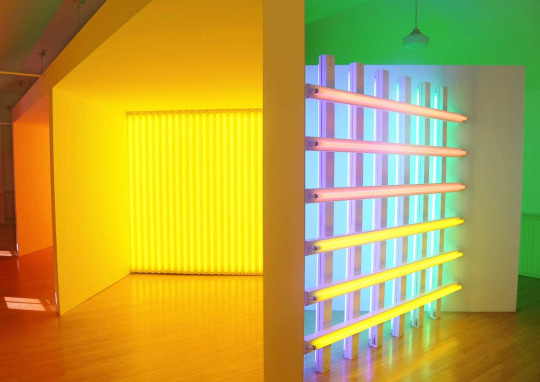
Dan Flavin Art Institute, Bridgehampton, NY.
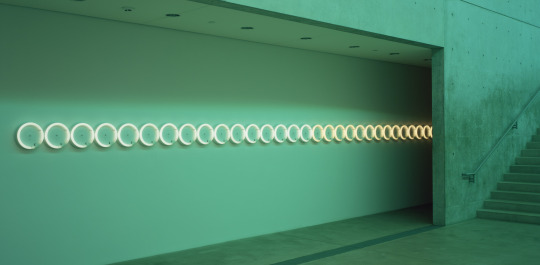

Dan Flavin: Constructed Light.
In the 1960s, artists' interpretations of 'minimalism' became increasingly sophisticated, with even the material itself becoming the object of diminution. For example, Dan Flavin's 1963 masterpiece The Diagonal, with its fluorescent tubes hung at a 45-degree angle, was the first to bring art into the realm of light; later, in the Monument for V. Tatlin series, which pays homage to the masters of Constructivism with its architectural arrangement, and in the Alternating series, which experiments with different colour combinations of light, the main focus is always on light and light. In the subsequent Monument for V. Tatlin series, which pays homage to the masters of Constructivism with its architectural arrangement, and the Alternating series, which experiments with different colour combinations of light, the main focus is always on the interaction between light and the exhibition space, and the fluorescent tubes themselves are no longer critical.
The increasing simplification of forms soon made minimal art contradictory, and not only did the leading art critics of the time, Clement Greenberg and Barbara Rose (Rose married Frank Stella in 1961 and they divorced in 1969), write numerous articles analysing minimal art, but Donald Judd often published essays alongside his work This has transformed Minimal Art from a 'non-conceptual' art form to one that is surprisingly rich in concepts.

Sol LeWitt. Serial Project, I (ABCD). 1966.
To resolve this awkward situation, the artist Sol LeWitt, known for his ever-expanding matrix structures, proposed an answer to this unresolved problem in 1966 with his 'Sequence Project One', a 'Conceptual Art'. Abandoning the physical, Sol LeWitt reduced art to a series of instructions. He stated: "When the artist presents art in abstract form, all the planning and decisions are made beforehand, the actual production is optional, and the idea becomes the art-making machine. The subject and the client are switched, and the material becomes the object of simplification.

'Untitled', Robert Morris, 1967–8.

Robert Morris with Box for Standing, 1961.
In Box with the Sound of Its Own Making (1961), a wooden box was filled with a tape recorder that recorded the sound of sanding and tapping, allowing the viewer to experience the process of making the artwork at the same time while in the 1966-67 Felt series, Robert Morris used the soft drape of fabric to make the minimal less cold and rigid.

Primary Structure,1966.
From the mid-1960s onwards, Minimal Art became a niche avant-garde art and a sought-after object in significant galleries. After the 1966 'Primary Structure' exhibition, the Guggenheim Museum of Art and the Whitney Museum in New York staged minimalist art productions and invited artists to curate solo exhibitions. Although there are still a few scattered critics who are critical of Minimalism's 'anaemic' visual sensibility - Dan Flavin's fluorescent lights were once derided as 'the same as a shop window' - Minimalism has left an indelible mark on the history of art and design.

In fashion, minimalism didn't really take root until the 90s. From the Calvinists' all-black robes of the 16th century to the Dutch men's all-black fashion of the 17th century, to Dandy's ornate embroidery on tailoring in the 19th century, to the basic geometric designs of Pierre Cardin in the 1960s and 1970s, to the simple lines of André Courrèges and Yves Saint Laurent. The simplicity of the lines of André Courrèges and Yves Saint Laurent, if not a political rejection of courtly excesses, then a fanciful vision of a future sci-fi world.


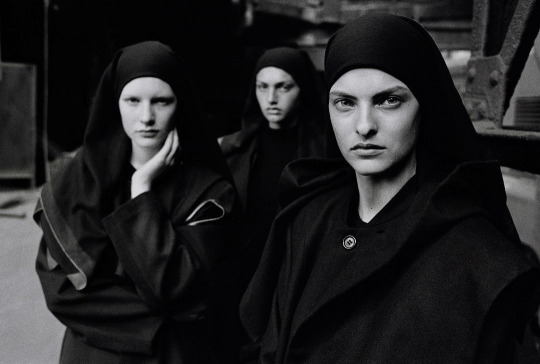
The always iconic image of Linda Evangelista, Michaela Bercu and Kirsten Owen for COMME des GARÇONS. Photographed by Peter Lindbergh in 1988.
Yohji Yamamoto and Comme des Garçons, who invaded Paris in the 1980s, and Maison Martin Margiela, who deconstructed and stripped away the forms of clothing vocabulary in the 1990s, were similar to the minimalist manifesto of de-conceptualisation. Still, the meticulous attention to detail made the clothes visually different from the rigid coldness of minimalist art.
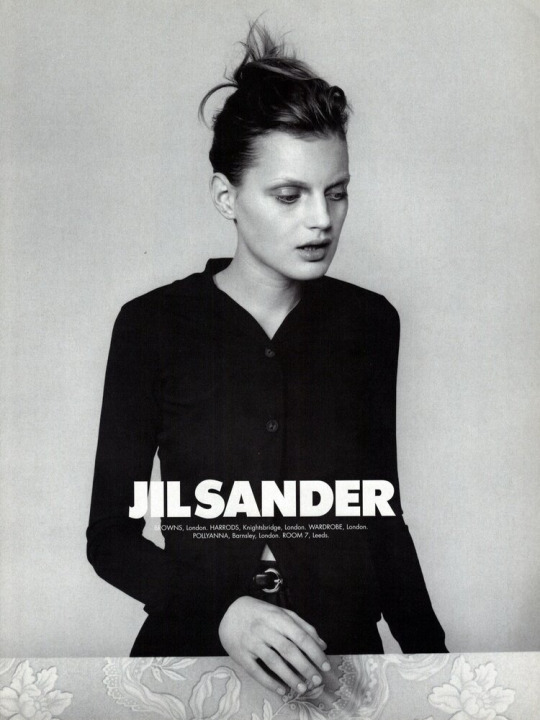
Guinevere van Seenus was photographed by Craig McDean for Jil Sander SS96 campaign.
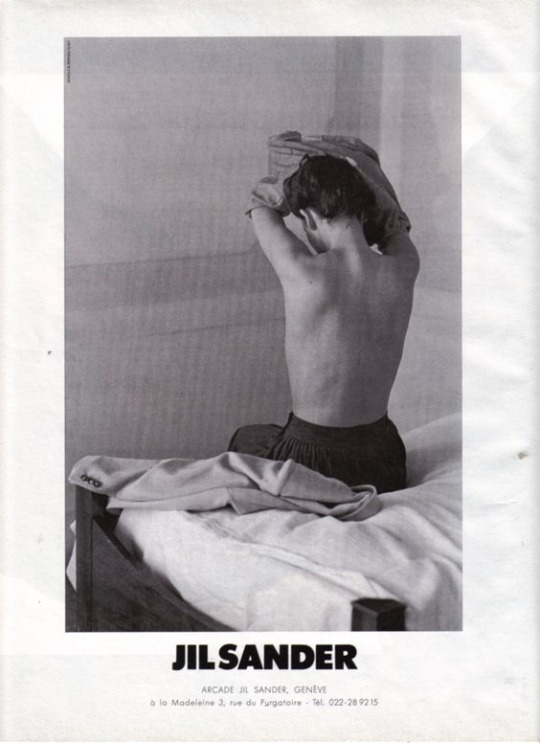

Jil Sander SS 1989.

Kirsten Owen for Jil Sander, photographed by Jean Francois Lepage, Fall/Winter 1990.

Jil Sander 1993 FW.
The '90s saw the 'anti-fashion' movement, with the exaggerated silhouettes and elaborate accessories of the '80s out of the picture, replaced by simple pieces that returned to the garment itself, with as few cut lines as possible and a black-and-white palette that made the garment work for the wearer, rather than making the fashion suffer. Jil Sander, known as the 'Queen of Minimalism', was founded in 1968, but it was only then that the brand gained widespread attention in the fashion world. By pairing a perfectly tailored trouser suit with a slim, tailored blazer, Jil Sander allows women to retain the confidence and dignity of a power suit while cutting out the padded shoulders, tones and embellishments to reinvent the working woman. Designed from the perspective of both the garment and the wearer, Jil Sander's garments required little effort to match and were known at the time as 'onions', meaning that each layer was quite similar; the designer's almost paranoid demand for fabrics also revealed the minimalist's fervent belief in materiality itself.

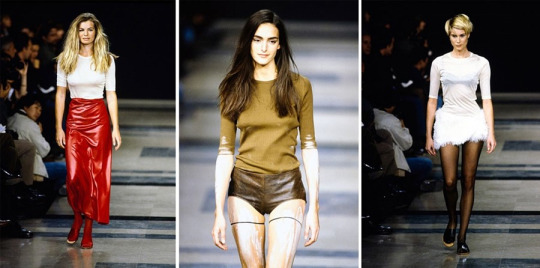
The complex, cold, minimalist aesthetic seems to have been born in the German-Austrian blood. Growing up in not-so-fashionable Vienna, Helmut Lang has been pushing the boundaries of simplicity since its first show in Paris in 1986. Anna Wintour recalled the first Helmut Lang show she saw: "I was like, 'This is not the spirit of the 80s! But then the economic bubble burst a few years later, and it became clear that Helmut Lang was already on the prowl.
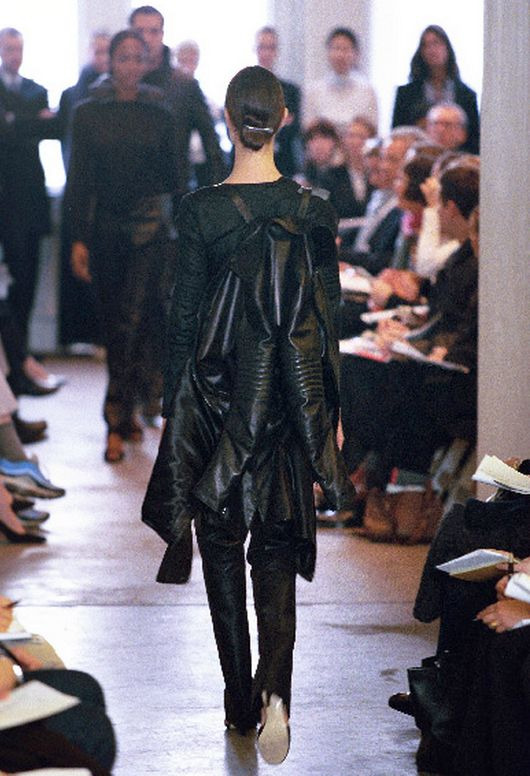
Helmut Lang 1999 FW.

Helmut lang autumn/winter 1999, backstage, by Juergen Teller.
Ahead of the 90s trend for office casual, Helmut Lang removed the symbols that separated formal and informal wear, creating a black and white fashion that was unconstrained by the occasion. "We were more than minimalist," said Michèle Montagne, who was in charge of Helmut Lang's PR at the time. "It was like a simplification contest; the fabrics weren't flashy, the silhouettes were stiff and rigid, the colours were minimal, and even the lines were the same for men and women. Helmut Lang, which always shows both men's and women's clothes, keeps the sound and light as simple as possible and calls its shows 'Séance de Travail': "Unlike Mugler or Montana, whose clothes are made for the stage, our clothes have nothing to do with the stage, they're just for wearing". says the designer.
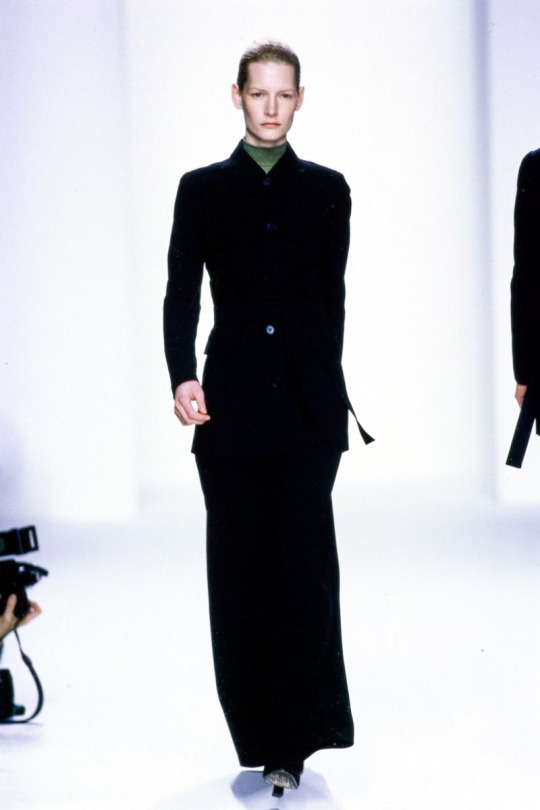
Calvin Klein 1996 FW.

Calvin Klein 1996 SS.
Calvin Klein, the embodiment of minimalist fashion in the 90s, returned to simplicity from the perspective of American business, which was also an unexpected fit with minimalist art. From a practical and marketable point of view, Calvin Klein's items in the 90s were reduced to one-piece dresses without seams, basic suits, white shirts of different lengths, knitted vests and pullovers, etc. This was in line with the 90s consumer mentality of sport, leisure and comfort, eliminating the hassle of dressing up and down and emphasising the modern spirit of practicality. Calvin Klein's penchant for simplicity was not limited to clothing, and in 1995 the designer hired British minimalist architect John Pawson to design the company's new headquarters and shop.

Céline 2017 SS.
The decorative elements that had faded in the 90s came back in the 2000s, and the catwalk was once again dominated by lace prints. However, after the financial tsunami of 2008, minimalist fashion, the symbol of simplicity, gradually regained its lost ground. I saw how successful Old Céline was under Phoebe Philo during this time. Rick Owens designed a series of slightly more complex geometric shapes, while Hussein Chalayan harked back to the sharp suits of the 90s by changing the proportions of his blazers. But is this the strongest and most intelligent of all? You and I should already have the answer.
In an age where Less is More is constantly being shouted, how many designs are actually being designed in this spirit, and how many are losing their inspiration and just chanting slogans? I don't want to look at the minimalist trends for Spring/Summer 2020 because it wouldn't make much sense. We need more time to witness the authentic creations; after all, the aesthetics that have dominated a century are not so easy to understand.
#Less is More#minimalism#De Stijl#Donald Judd#The Black Square#Alexander Rodchenko#Frank Stella#Jackson Pollock#Shaped Canvas#Installation Art#Site Specific Art#Dan Flavin#The Diagonal#Monument for V. Tatlin#Sol LeWitt#Conceptual Art#Robert Morris#avant-garde art#yohji yamamoto#COMME des GARÇONS#Maison Martin Margiela#Jil Sander#anti-fashion#Helmut Lang#90s#Calvin Klein#Phoebe Philo#Rick Owens#Old Céline#Hussein Chalayan
14 notes
·
View notes
Text

TESORO- Work in progres en mi estudio- Preparando exposición para la Sala de la colección estable de la Fundación Fortabat - Buenos Aires
7 notes
·
View notes
Text

Meg Webster, The Perfect Spiral, 1990
0 notes
Text
2023 Compost. ¡Se va a acabar! Fútbol y Dictadura Cívico-Militar Espacio de arte contemporáneo.
Curaduría: Agustina Rodríguez y Fabiana Puentes.
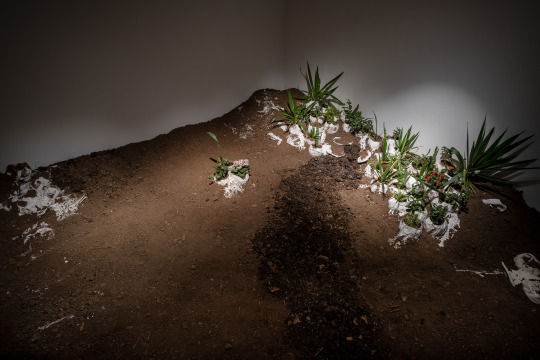


fotos: Luis Alonso
Advertencia: Debe quitarse los zapatos para ingresar a la sala.
La obra es una instalación específica que propone una reflexión en torno a la naturaleza, el descarte y la memoria como elemento vivo. Mediante la utilización de pelotas de fútbol obsoletas que se reutilizan como macetas, se propone reconfigurar la sala en un terreno que opera como germinador. Tierra, plantas y compost se apoderan del espacio, conformando un volumen que se expande en una suerte de tremedal únicamente transitable por aquellas personas dispuestas a embarrarse. Esta acumulación opera como potencial germen que habita en la propia obra, evocando al espacio de encuentro que habilitó el Mundialito, que se vivió en las gradas, en los alrededores del estadio, y que rememora un campo de juego también lodoso y difícil de desentrañar. Mediante la descomposición la técnica de compostaje transforma materia orgánica en tierra fértil posibilitando que emerja y se enraíce nueva vida.
La propuesta invita a los públicos a situarse en un lugar de aparente incomodidad al exponerse directamente al contacto con el compost. Conocer, hablar, transitar por los diversos relatos y los hechos que conforman nuestra historia reciente también implica contactar con información incómoda, dolorosa y difícil de procesar.
Fabiana Puentes y Agustina Rodríguez.
0 notes
Text
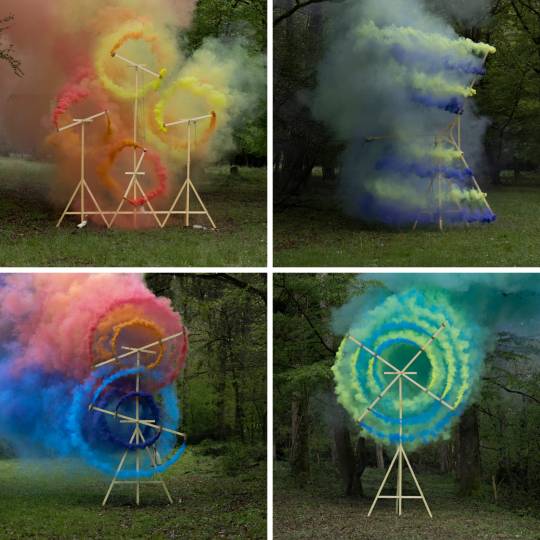
Site-Specific Kinetic Installations by Pinaffo & Pluvinage Channel Modest Materials Into Ephemeral Experiences
216 notes
·
View notes
Text

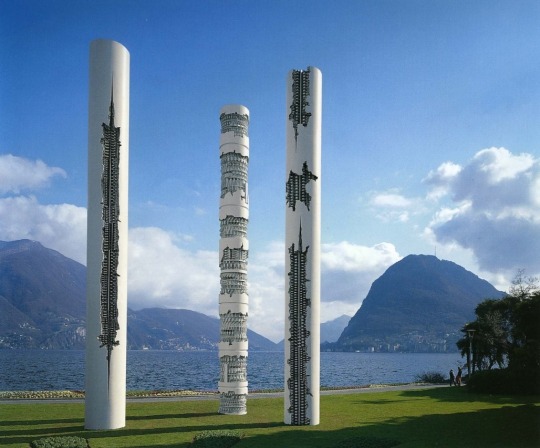

Arnaldo Pomodoro (Italian, b.1926)
Triade - 1997
more here
108 notes
·
View notes
Text



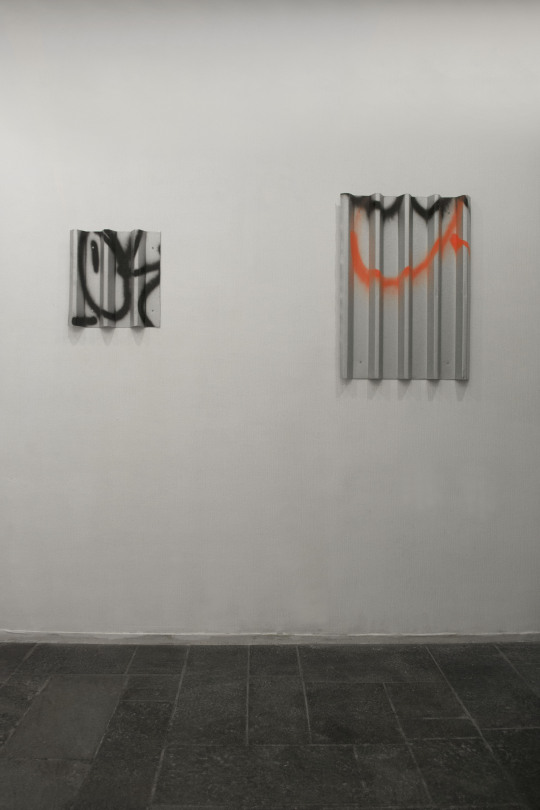

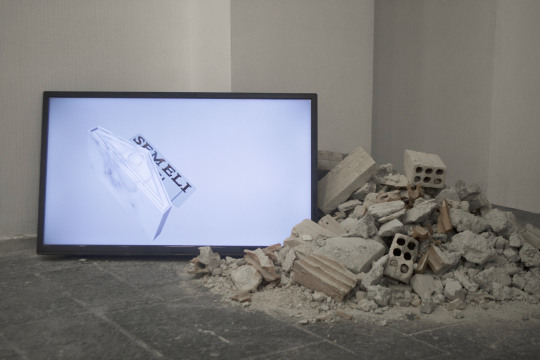
"Under the ceiling, Above the ground"
Under the ceiling, Above the ground is a project in collaboration with the artist Natalia Domínguez. It is an installation in SNEHTA residence space in Athens. During our stay in the Kypseli neighborhood, where the residency space is located, we investigated and we collect various architectural elements that have been affected by the diverse gentrification of the area. In the neighborhood you can find all types of architectural styles such as neoclassical, art deco, residential buildings and houses built with contemporary materials. In each of the elements collected, the intervention of the human factor is visible along with the friction of natural conditions. In this specific installation we present videos with 3D architectural objects with ancient Greek influences that They have been vandalized and modified, along with construction waste collected at the construction sites during the time we were there. The videos were accompanied by an ambient sound piece during the exhibition.
#contemporary art#conceptual art#minimal art#site specific art#video art#construction#architectural art#christos papasotiriou art#natalia domínguez art#SoundCloud
0 notes
Text
Zumbro Bend/Three Desiring Bodies Opens at Rochester Art Center, Rochester, MN
Zumbro Bend/Three Desiring Bodies
Rochester Art Center
Opening Saturday, November 18, 1-4 pm. Artist Talk 2 pm.
Sinuous Bend Installation /Onofrio Gallery
Gel Medium Lab/Davies Gallery
Bait Shop/Nook Gallery
Sound Compositions by Chooch Karton
In Zumbro Bend: Three Desiring Bodies, Minneapolis based visual artist Pete Driessen installs three separate site-specific works, each a different abstracted fork in the river ecosystem. Titled after the South Fork Zumbro River that winds around the Rochester Art Center, the artist illuminates meandering sociopolitical variants on the river as creative life force, terrain erosion and deposition, land extraction and water channeling.
Through the language of painting, form, and space, Driessen investigates river system topology, land erosion and sediment deposition structures, and the animate quality of flowing water systems. The Zumbro River, a Mississippi River tributary with three separate forks, offers three exhibit positions with distinct material situations.
The first fork, Zumbro Bend, reflects upon the river environments meandering erosion and deposition, with wood, limestone, and mixed media painting. The gallery floor serves as flood plain, with work arranged around the curvilinear structure of a river bend. In the second Gel Medium Lab fork, the artist experiments with gloss acrylic gel medium positioning the river via our human bodily connections to innate desire, creative production, and reproduction qualities. The third Bait Shop fork nostalgically reflects upon the artists locational identity within the water culture of the Minnesota & Upper Midwest through recreational and tinkering structures.
Amidst the duration of the exhibition, Driessen will present a choreographed sound performance with Pooch Karton, writer and artist dialogue, and a limited-edition artist’s book release.
Shows Runs November 18, 2023-March 24, 2024
Rochester Art Center Gallery Hours Wednesday – Sunday, 11 am - 4 pm
Closed Monday -Tuesday, & Holidays
30 Civic Center Drive SE, STE 120, Rochester, MN USA 55904
www.rochesterartcenter.org [email protected]
Image: Pete Driessen © 2023. Line/Template. Dry rock protection wall construction east of Rochester, MN. Photographer unknown. Modified digital print. 17 x 24 inches. Courtesy the artist & Olmsted County Historical Society & Museum.
#Pete Driessen Art#Pete Driessen Visual Art#Pete Driessen Visual Artist#Zumbro Bend#Rochester Art Center#Three Desiring Bodies#Pooch Karton#Olmsted County Historical Society#Zumbro River#Gloss Acrylic Gel Medium#Exhibition#Ins#painting#Bait Shop#Gel Medium Lab#Sinuous Bend Installation#Site Specific Art#Sound Art
0 notes
Text
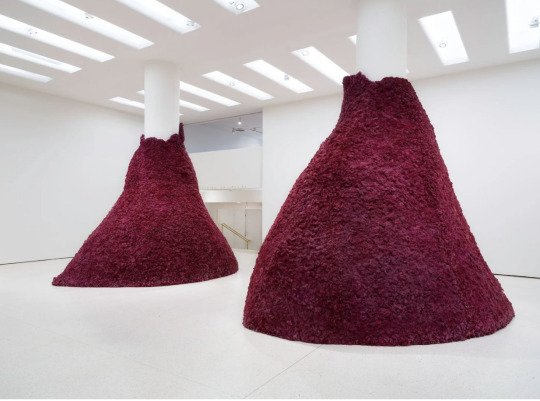
Maro Michalakakos. Oh ! Les Beaux Jours (Oh Happy Days), 2012.
polyurethane foam, polyester fiber + acrylic latex paint
2 notes
·
View notes